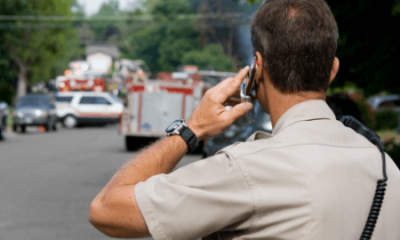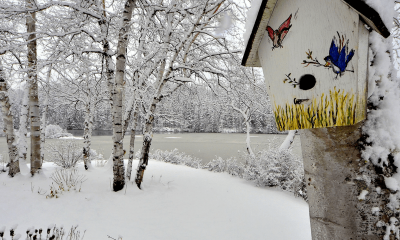Finish Your 12-Step Disaster Plan
The Final Steps in Our 12-Step Disaster Plan
This is final installment in our four-part series on creating a 12-Step Disaster Plan focuses on fall and winter weather.
October – Fire safety & escape plans
October is National Fire Prevention month, making it a good time to focus on your fire safety and escape plans.
Every home and business should:
- Make a fire escape plan
- Clear escape routes of objects that are in the way of exiting properly
- Have a central meeting area
- Vocalize and write down where this will be and have it visually displayed in a public place
- Practice your escape plan
- Running through a practice drill of your escape plan is vital. You don’t want to find out that your alternate escape route out of a room is, for example, through a window that does not open or is malfunctioning.
- Visit the National Fire Protection Association's (NFPA) website for more information, resources and drills
November – Prepare extra clothing
Winter storms can leave many without electricity and heat for days. Snow build up can also leave many stranded inside their homes or cars for unknown amounts of time until emergency services can be reached. This uncertainty in weather, especially in the colder months makes it important to have extra season-appropriate clothing on hand in case of a disaster. Store the extra clothing in a suitcase or a box (preferably water proof) in a known location, so that you can easily access it and it is transportable.
Items to include in this winter kit include:
- Thick Blankets
- Hats
- Gloves/mittens
- Long-sleeved shirts
- Nylon-material (water-proof)
- Pajamas
- Scarves
- Socks
- Sweaters
- Towels
- Thermal undergarments
Having your skin exposed to cold weather can lead to health concerns such as hypothermia. You must prepare yourself to weather the cold in the event of a storm.
December – Medication backups
Communicate with your pharmacy and doctor to prepare a plan for back up medications in case of an emergency situation. If a disaster strikes, there is no guarantee that doctor’s offices or pharmacies will be open to the public so it is of utmost importance to plan ahead for these occasions, especially for those whose health depends on it. Be sure to have backups of your medications filled for you family members and pets and in the household as permitted.
Creating an entire disaster plan to help prepare your house, family or business from disaster can be an overwhelming task as there are many parts to consider and plan out. By breaking down these tasks into simple, monthly steps, making a disaster plan becomes much more manageable and easier to complete. In just 12 months, you can have a comprehensive disaster plan ready to go and feel much more secure about your family or business's future.
To catch up on this series, continue reading:
- Part 1 – January, February & March “Ring in the New Year with a 12-Step Disaster Plan”
- Part 2 – April, May & June “Spring is Here – Continue Your 12-Step Disaster Plan”
- Part 3 - July, August & September "Continue Your 12-Step Disaster Plan"












